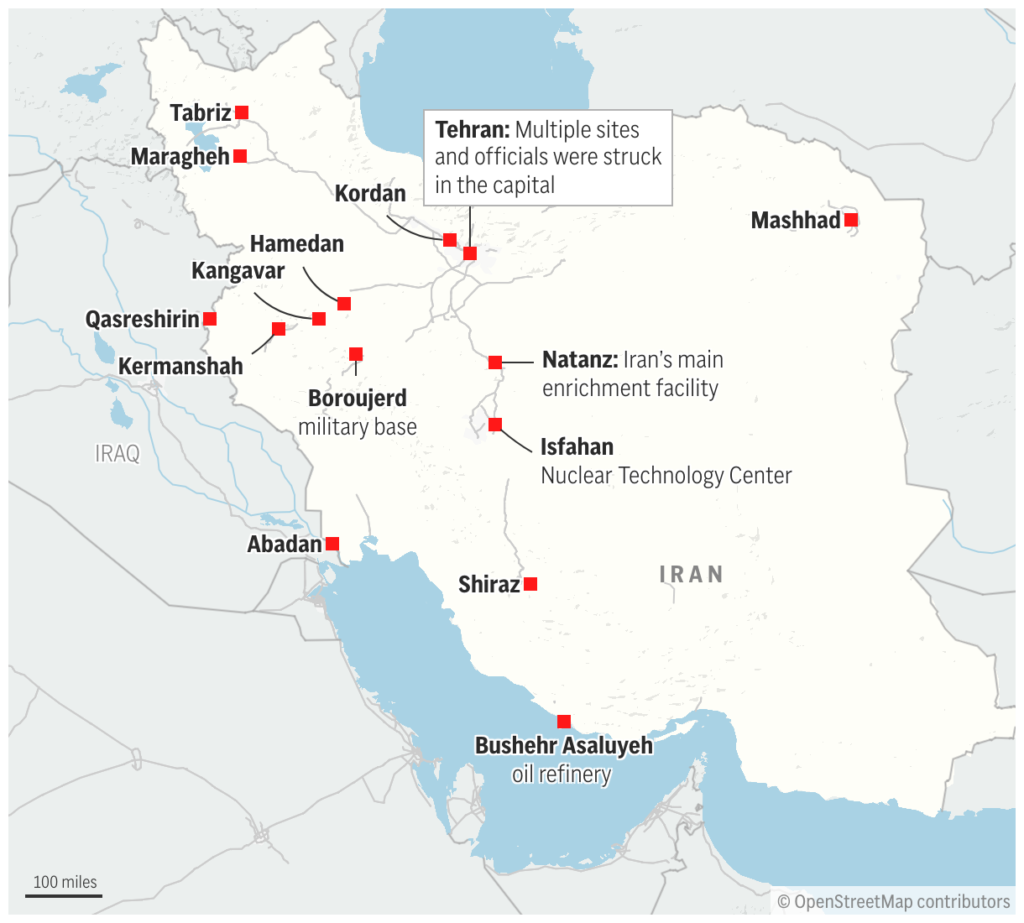Fattah is Iran’s first ever hypersonic missile, and it has been used in attacks on Israel [Morteza Nikoubazl/NurPhoto via Getty]
The war between Israel and Iran continues to escalate, with both sides vowing to use maximum pressure on their enemy following days of violence triggered by Israel’s aerial offensive.
Decades of preparations for this conflict, a years-long shadow war and brewing regional tensions blew up on Friday 13 June when Israel bombarded Iran, hitting key nuclear and military sites and assassinating top figures.
Iran has since fired salvos of ballistic missiles, causing extensive damage in major Israeli cities, which growing casualty numbers on both sides.
As the region’s inhabitants watch the long-anticipated conflict unravel, many have been comparing between Israel’s highly advanced technological capabilities and aerial superiority, and Iran’s long-range missiles.
The New Arab breaks down both countries’ military capabilities.
Number of soldiers
According to figures from the International Institute for Strategic Studies in 2025, Iran outnumbers Israel by active personnel, with 960,000 for the Islamic republic versus 634,500 for its much smaller archenemy.
They include 610,000 active personnel and 350,000 reservists in Iran, compared to Israel’s 169,500 active personnel and a bigger number of reservists at 465,500.
Israel has led a military operation in Gaza since October 2023, occupies the West Bank, waged a full-fledged war against the Hezbollah militant group in Lebanon last year, and has carried out hundreds of airstrikes in Syria and Yemen.

Aircraft
Israel overpowers Iran in its aerial warfare, using a range of sophisticated fighter jets including 39 of the US-made Lockheed Martin F-35 Lightning II – commonly known as the F-35 – which can penetrate radar defences without being detected.
Tel Aviv is also in possession of 196 F-16 and 75 F-15 fighter jets, with speeds varying between 1,976 km and 3,097 km per hour.
Iran has claimed that it downed three F-35’s since the war started on Friday 13 June, and captured at least one pilot. Israel has denied this.
If true, it would be the first time the fighter jet has ever been shot down.
On Monday, Israel said it has achieved “aerial superiority” over the Iranian capital and has control of the skies from western Iran to Tehran.
In comparison, Iran owns around 180 Russian-made fighter jets – older and lacking maintenance, with crushing Western sanctions making it incredibly difficult for Iran to upgrade its planes.
Iranian drones and missiles
Iran has not yet used its fighter jets in the war, relying solely on its missiles and drones.
These include the Shahed 136, Emad, Khorramshahr-4, and Fattah, with their ranges varying between 1,400 km and 2,500 km, thus reaching anywhere in Israel.
The latest addition to the Fattah includes hypersonic missiles which are difficult to intercept and which Iran has used in its attacks on Israeli cities.
Iran’s stockpile of these ballistic missiles is estimated to be between 2,000 and 3,000 and is reportedly producing between 300 and 500 of them every month, challenging Israel which has gone after Iran’s nuclear and missile programmes.
Israel’s air defence system
As well as relying on its Air Force, Israel has one of the world’s most advanced defence systems, helping it down most incoming projectiles.
Israel’s multi-layered and multi-billion-dollar air defence system include the Iron Dome, the Arrow-3, David’s Sling, as well as the Iron Beam, each used for different purposes and with different ranges.
The US has invested heavily in this defence system, guaranteeing Israel – to a large extent – a safe cover from missile attacks.
At the centre of this air defence system is the Iron Dome, which uses a radar to detect and intercept short-range rockets up to 70 km away. Israel says its success rate exceeds 90 percent and has a response time of seconds.
David’s Sling is used for medium-range missiles, including those fired by Iran-backed Hezbollah militants in Lebanon.
There is also the Arrow used to intercept long-range missiles up to 2,400 km away, which Israel has used against Iranian missiles and rockets fired by the Iran-backed Houthis in Yemen.
Israel’s air defences also include Patriot missiles, its oldest component and with a range of up to 70 km also.
Nuclear power
Israel argues that one of its main reasons to going to war with Iran is over Tehran’s nuclear programme.
Tehran and Washington had been engaged in negotiations before the war started in a bid to reach an agreement, but this looked less likely as both refused to back down on certain demands including uranium enrichment.
The US and Israel are in full opposition of Iran having a nuclear programme, and Israel has bombed several nuclear sites in Iran since Friday, including its main enrichment plant at Natanz.
Iran’s Supreme Leader Ali Khamenei has repeatedly denied that his country sought to create a nuclear bomb, arguing that it goes against their Islamic beliefs. The country was enriching uranium at 60 percent, not far from the 90 percent weapons-grade level needed to create a nuclear warhead.
Despite widespread speculation, Israel has neither confirmed nor denied having nuclear weapons, adhering to a policy of deliberate ambiguity. But it is believed to have between 80 to 400 nuclear warheads, with the first completed around late 1966 or early 1967.
The Negev Nuclear Research Centre near the city of Dimona sits at the heart of Israel’s secretive nuclear programme.
 Eurasia Press & News
Eurasia Press & News




